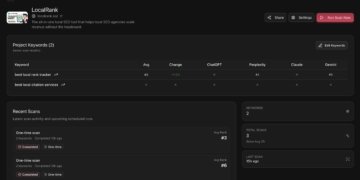eforthink has developed a Hospital Asset Tracking [https://www.eforthink.com/hospital-asset-tracking/] system byleveraging UWB and Bluetooth AOA positioning technologies [https://www.eforthink.com/technology/uwb-ble-aoa-fusion-positioning-system/]. Through RTLS technology, it enables precise positioning of medical supplies, thereby enhancing hospital asset management to a new level.
By conducting real-time tracking of equipment location, inventory status and usage distribution, as well as implementing anti-loss and anti-theft measures for important assets, this system constructs a visual supervision system for hospital supplies. It effectively improves the efficiency of material management and the accuracy of dispatching. Meanwhile, electronic fences are set up, and an alarm will be triggered once the supplies leave the designated area, thus ensuring the safety of important medical assets.
Image: https://ecdn6-nc.globalso.com/upload/p/3548/image_other/2025-07/poster.png
Applications in Hospital Asset Management
Instant Asset Locating
Hospitals often lose track of critical equipment such as infusion pumps, defibrillators, and surgical tools.
With UWB-powered RTLS, staff can pinpoint the exact location of critical supplies within seconds, even in complex multi-story facilities . During code emergencies, this capability ensures immediate access to life-saving equipment, reducing response times .
Automated Inventory Management
Manual inventory checks are time-consuming and error-prone. By integrating Indoor Rtls [https://www.eforthink.com/indoor-rtls/] with inventory systems, hospitals automate stocktaking processes.
Real-time asset tracking with RTLS automates this process by continuously updating inventory records as assets move. For instance, when a ventilator is moved from one ward to another, the system automatically updates its location, eliminating the need for manual log entries . This not only saves labor costs but also prevents stockouts of essential supplies.
Preventing Theft and Loss
High-value medical equipment is vulnerable to theft or misplacement.
High-value assets, such as portable defibrillators or narcotics, are equipped with UWB tags and monitored via geofences .
Uwb Systems can set geofences around restricted areas. If an asset crosses a predefined boundary, the system triggers an immediate alert, preventing unauthorized removal.
Real-Time Tracking and Monitoring
Hospitals can leverage UWB-powered RTLS to track and monitor the location and status of materials in real-time, providing instant visibility into inventory levels, usage patterns, and distribution.
This enables optimized resource allocation, reduces idle equipment, and minimizes waste, thereby streamlining overall material management . For example, UWB tags on high-value medical devices like MRI machines or surgical robots allow staff to monitor their operational status (e.g., power consumption, maintenance cycles) alongside their location, ensuring proactive maintenance and preventing downtime .
Conclusion
As healthcare evolves, real-time asset tracking will become indispensable.
By integrating UWB systems and Indoor RTLS, hospitals achieve unprecedented efficiency in material management through real-time tracking, automated inventory, and proactive security measures.
Beyond asset tracking, RTLS can improve patient safety by monitoring fall risks, ensuring timely medication delivery, and optimizing emergency response.
Media Contact
Company Name: Eforthink Technology Co., Ltd.
Email:Send Email [https://www.abnewswire.com/email_contact_us.php?pr=how-can-rtls-technology-be-used-to-quickly-locate-and-inventory-movable-assets-in-hospitals]
Country: China
Website: https://www.eforthink.com/
Legal Disclaimer: Information contained on this page is provided by an independent third-party content provider. ABNewswire makes no warranties or responsibility or liability for the accuracy, content, images, videos, licenses, completeness, legality, or reliability of the information contained in this article. If you are affiliated with this article or have any complaints or copyright issues related to this article and would like it to be removed, please contact retract@swscontact.com
This release was published on openPR.















